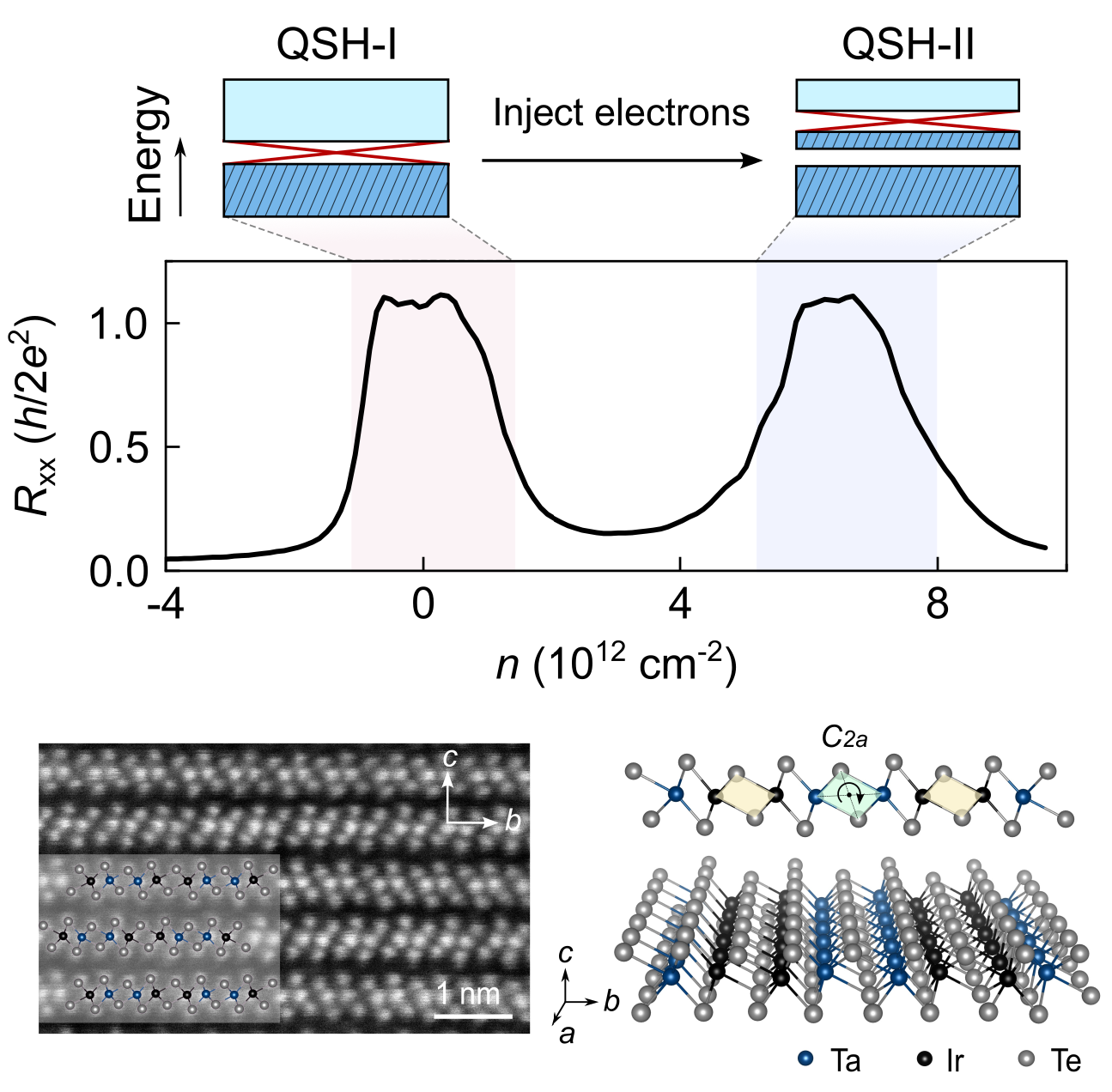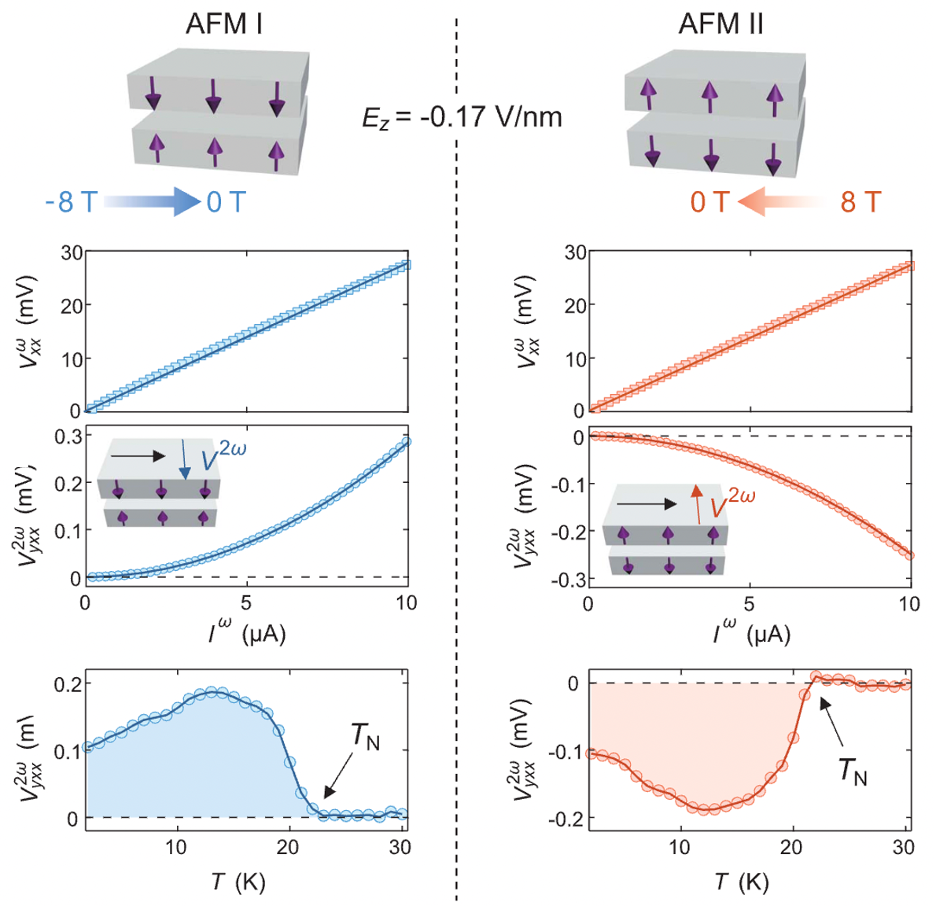Our research is driven by the discovery of new materials and emergent quantum phenomena, with a focus on van der Waals and interfaces. We explore how novel quantum functionalities—such as phase transitions, topological states, correlated electronic phases, and entanglement—can be harnessed for real-world applications in quantum technologies and next-generation computing architectures.
News
Research Highlights

A new monolayer and dual quantum spin Hall
We we report a dual QSH insulator within a new monolayer crystal of TaIrTe4, arising from the interplay of its single-particle topology and density-tuned electron correlations. At charge neutrality, monolayer TaIrTe4 demonstrates the QSH insulator, manifesting enhanced nonlocal transport and quantized helical edge conductance. After introducing electrons from charge neutrality, TaIrTe4 shows metallic behaviour in only a small range of charge densities but quickly goes into a new insulating state, entirely unexpected on the basis of the single-particle band structure of TaIrTe4. This insulating state could arise from a strong electronic instability near the van Hove singularities, probably leading to a charge density wave (CDW). Remarkably, within this correlated insulating gap, we observe a resurgence of the QSH state. The observation of helical edge conduction in a CDW gap could bridge spin physics and charge orders. The discovery of a dual QSH insulator introduces a new method for creating topological flat minibands through CDW superlattices, which offer a promising platform for exploring time-reversal-symmetric fractional phases and electromagnetism.

Moiré synaptic transistor
We report the experimental realization and room-temperature operation of a low-power (20 pW) moiré synaptic transistor based on an asymmetric bilayer graphene/hexagonal boron nitride moiré heterostructure. The asymmetric moiré potential gives rise to robust electronic ratchet states, which enable hysteretic, non-volatile injection of charge carriers that control the conductance of the device. The asymmetric gating in dual-gated moiré heterostructures realizes diverse biorealistic neuromorphic functionalities, such as reconfigurable synaptic responses, spatiotemporal-based tempotrons and Bienenstock–Cooper–Munro input-specific adaptation. In this manner, the moiré synaptic transistor enables efficient compute-in-memory designs and edge hardware accelerators for artificial intelligence and machine learning.

Quantum metric nonlinear Hall effect
Quantum geometry in condensed-matter physics has two components: the real part quantum metric and the imaginary part Berry curvature. Whereas the effects of Berry curvature have been observed through phenomena such as the quantum Hall effect in two-dimensional electron gases and the anomalous Hall effect (AHE) in ferromagnets, the quantum metric has rarely been explored. Here, we report a nonlinear Hall effect induced by the quantum metric dipole by interfacing even-layered MnBi2Te4 with black phosphorus. The quantum metric nonlinear Hall effect switches direction upon reversing the antiferromagnetic (AFM) spins and exhibits distinct scaling that is independent of the scattering time. Our results open the door to discovering quantum metric responses predicted theoretically and pave the way for applications that bridge nonlinear electronics with AFM spintronics.

Topology and geometry under nonlinear electromagnetic spotlight
For many materials, a precise knowledge of their dispersion spectra is insufficient to predict their ordered phases and physical responses. Instead, these materials are classified by the geometrical and topological properties of their wavefunctions. A key challenge is to identify and implement experiments that probe or control these quantum properties. In this Review, we describe recent progress in this direction, focusing on nonlinear electromagnetic responses that arise directly from quantum geometry and topology. We give an overview of the field by discussing theoretical ideas, experiments and the materials that drive them. We conclude by discussing how these techniques can be combined with device architectures to uncover, probe and ultimately control quantum phases with emergent topological and correlated properties.
Research Funding


